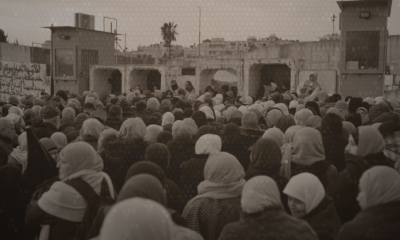World news
The inspiration of Iran’s Islamic revolution on Yemen’s Islamic resistance movements
The significant impact and influence of the Islamic Revolution on Yemeni Shiites, known as the Ansarullah group or Houthi movement, are noteworthy. The Islamic Revolution and the wave of righteousness it ignited, stemming from the grand popular movement in Iran, along with historical religious and intellectual ties, made Zaidis and their leaders feel that they could revive their glorious past. Before the Islamic Revolution in Iran, Yemeni Shiites, who had long been marginalized in politics and governance, were suppressed after a coup in 1962. The Yemeni government, until the Islamic Revolution in Iran, did not allow them to participate in politics and essentially did not recognize any rights for them.
In this regard, Dr. Essam al-Emad, a former Wahhabi scholar who later converted to Shia Islam in Yemen, noted that before the Islamic Revolution, the level of religious knowledge among Yemeni Shiites was so low that they were not even aware of events like Ghadir and Ashura. Their acceptance of the revolution and the Houthis can be seen as a largely indirect and cultural process. The Houthis themselves, in a spontaneous manner, were indirectly influenced by the Islamic Revolution. With the Islamic Revolution in Iran, the establishment of an Islamic government based on religious beliefs and values in the form of the formation of the Axis of Islamic Resistance in the West of Asia contributed to the identity, cohesion, and revival of Zaidi Shiites in Yemen. This resulted in the inclination towards Twelver Shiism, influence on Yemeni personalities, and the spread of revolutionary slogans, with the Houthis serving as the armed wing of Yemeni Shiites in their quest for their rights. The Islamic Republic of Iran, by shaping the Axis of Islamic Resistance, aimed to lead Shia governments and movements in the region in harmony with each other and transmit its revolutionary soft teachings. Iran’s influence on Yemeni Shia identity is evident.
Notable organizations include the Ja’fari Shia Association in Yemen, the Badr Scientific and Cultural Institute, the Al-Rasaliyyah Institute, Ja’fariyyah schools in Aden, the House of Ahl al-Bayt in Sanaa, the Higher Scientific Center in Sanaa, the Summer Center in Dhi Na’im, and the Al-Thaqlayn Center in Sanaa. They publish magazines and publications aimed at promoting Zaidi Shiite beliefs. Hussein al-Houthi, by introducing young Yemenis to Imam Khomeini’s ideas and promoting them among the youth, made a significant step towards emulating and accepting the ideals of the Islamic Revolution. In Yemen today, several Shiite educational centers are involved in cultural and educational activities, playing their part in fostering Zaidi Shiite identity.
The most significant feature of the discourse of the Islamic Revolution is the necessity of having a monotheistic perspective among the leaders and members of the Ansar Allah movement. This perspective prevents materialistic and one-sided views on societal issues and emphasizes a profound connection with God, which has had a very positive impact on the resilience of the Ansar Allah movement over more than twenty years of their struggle on multiple fronts (against the ruling regime, Saudi Arabian aggression, and armed Takfiri groups). This shift from results-oriented approaches to monotheistic perspectives and engagement with God has made the Ansar Allah movement more enduring even in the face of immense challenges. Dr. Issam al-Amad, a former Wahhabi scholar who has recently converted to Shiism, states: The Zaidi community in Yemen was suffering under oppression and on the brink of extinction. I admit that if the Islamic Revolution in Iran had not taken place, the Zaidi sect in Yemen would have disappeared because there was an extensive propaganda campaign from Egypt and other Arab countries, along with television programs promoting Sunni beliefs and Arab nationalism. All of these factors led to the outward appearance of many people in Yemen identifying as Zaidi. It was only with the occurrence of the Islamic Revolution and the spread of Shiite books in Yemen that the Zaidis returned to their true faith. Regarding the Twelver Shiites in Yemen, it’s noteworthy that before the victory of the Islamic Revolution, there were very few Twelver Shiites in Yemen, and they were scattered. However, after the victory of the Islamic Revolution, a transformation occurred in this regard, and they formed their organizations.
Most of the Twelver Shiites in Yemen were previously adherents of other religions. Their numbers are increasing day by day, and in many Shiite families, there is at least one convert. After the victory of the Islamic Revolution in Iran, the situation of Twelver Shiites in Yemen has changed. For example, there were no Hussainiyahs (Shiite religious centers) in Yemen before the Islamic Revolution. However, after this event, several Hussainiyahs were established in various regions of Yemen, and Shiites expanded their mosques and dedicated places of worship. Therefore, based on available evidence, it can be acknowledged that after the victory of the Islamic Revolution in Iran, Twelver Shiites in Yemen have experienced significant growth.
Iranians have played an undeniable and influential role in introducing Islam to the Yemeni people and their inclination towards Shiism. After the failure of his uprising against the Abbasid government in Tabarestan, Yahya ibn Hussein fled to Yemen and established the first Zaidi state in Sa’dah. The Zaidis consider Seyyed Jalal al-Din Ashraf in Gilan and Seyyed Hashem in Mazandaran to be descendants of the Imams, and they hold a special status among their Imams. Additionally, Trit Nasr Attaroush and Nasser Kabir in northern Iran hold great significance for the Zaidis in Yemen. Today, Ansarullah’s political discourse against tyranny and arrogance is in harmony with Iran’s Islamic Revolution. This process resembles the emulation of Hezbollah’s organizational, political, and resistance experiences influenced by the Iranian Revolution. After the victory of the Iranian Revolution, various Iranian values and revolutionary symbols have been observed in Yemen: Since 1979, Zaidi Shiites in Yemen have been organizing summer camps in different cities and regions, attracting 25,000 to 30,000 students from various educational levels, from elementary school to high school. In all of these camps, portraits of Imam Khomeini and the Supreme Leader are prominently displayed. Books by prominent Iranian scholars, including Martyr Morteza Motahhari and Martyr Dastghayb, are taught. Iranian-dubbed films are screened. It’s important to note that these camps receive no financial assistance from the Islamic Republic of Iran, and they are organized with minimal resources.

You may like
-


Iran’s Anti-Hegemony Stance Strengthens, Cementing Its Role as Region’s Most Independent Nation
-


Israel will collapse when God fulfills Iranian nation’s ‘Death to America’ prayer: Albanian historian
-


Bloodshed in the Shadows: West Bank Crisis Deepens as Gaza Dominates Headlines
-


Conflating Judaism and Zionism only strengthens Israel: Jewish Activist
-


“Western Double Standards in Addressing Conflicts in the Middle East and Ukraine”
-


“Harris-Trump Debate Sparks New Controversies in U.S. Political Landscape”


Iran’s Anti-Hegemony Stance Strengthens, Cementing Its Role as Region’s Most Independent Nation

Israel will collapse when God fulfills Iranian nation’s ‘Death to America’ prayer: Albanian historian

Bloodshed in the Shadows: West Bank Crisis Deepens as Gaza Dominates Headlines

An anti-Semite is now someone Jews don’t like

Negotiations a way for coercive govts. to impose new demands that definitely won’t be fulfilled

Bloodshed in the Shadows: West Bank Crisis Deepens as Gaza Dominates Headlines

Israel will collapse when God fulfills Iranian nation’s ‘Death to America’ prayer: Albanian historian

Iran’s Anti-Hegemony Stance Strengthens, Cementing Its Role as Region’s Most Independent Nation

Jewish parties foreign policy

Will Israel adhere to its commitments under the ceasefire agreement?

“Western Double Standards in Addressing Conflicts in the Middle East and Ukraine”

“Harris-Trump Debate Sparks New Controversies in U.S. Political Landscape”

Challenges Facing the U.S. Navy: Addressing Gaps in Strategy and Capability

